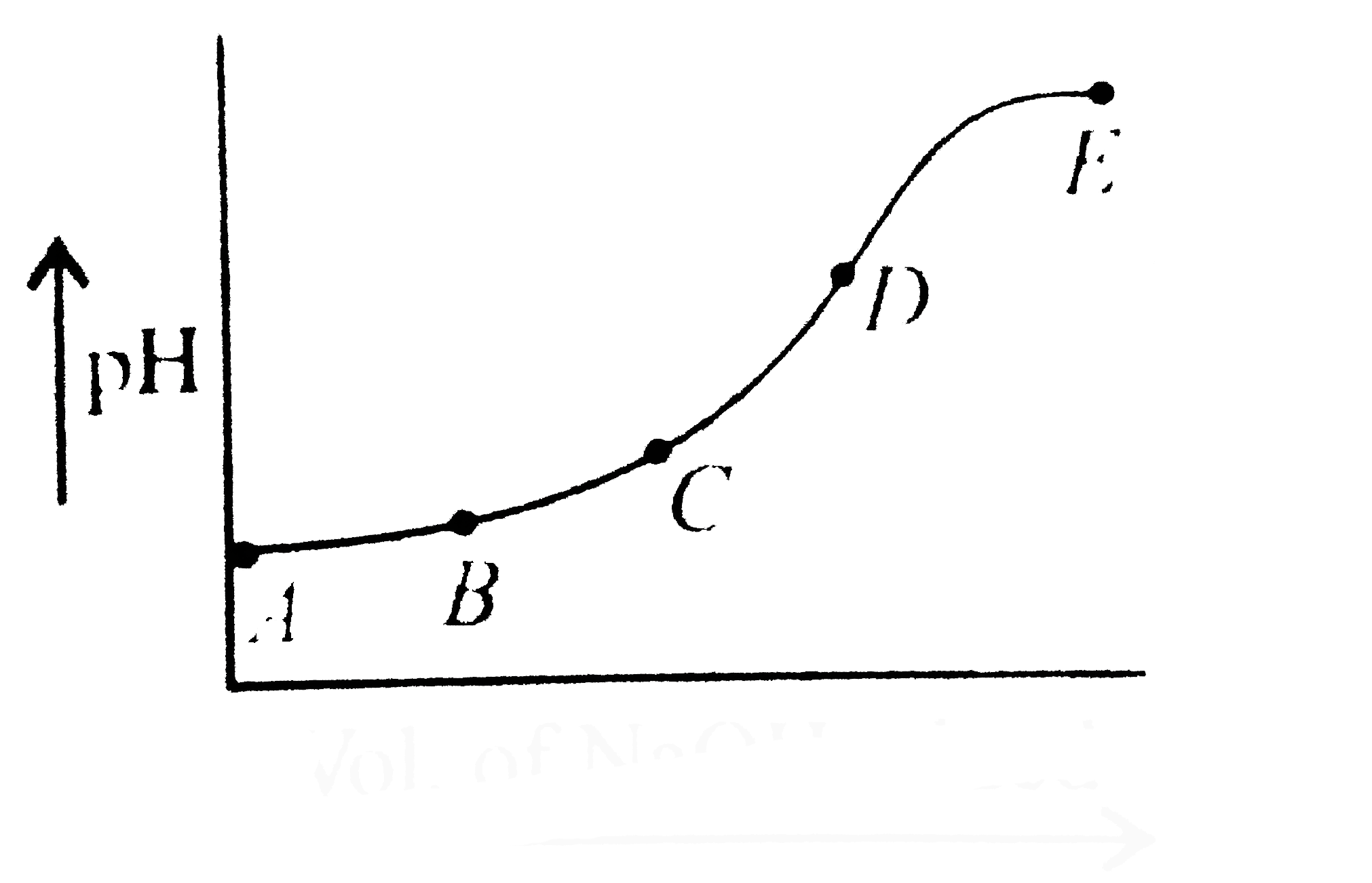If the equlibrium constant for the reaction of weak acid HA with strong base is 109 then calculate the pH of 0.1 M NaA.
The correct Answer is:9
To calculate the pH of a 0.1 M NaA solution, we can follow these steps:
Step 1: Understand the reaction and equilibrium constant
The weak acid HA dissociates in water as follows:
HA⇌H++A−
When a strong base (like NaOH) is added, it reacts with the weak acid HA, shifting the equilibrium to the right and producing more A^-. The equilibrium constant for this reaction is given as K=109.
Step 2: Relate the equilibrium constant to Ka and Kw
The equilibrium constant K for the reaction of the weak acid with the strong base can be expressed as:
K=KaKw
where:
- Ka is the acid dissociation constant of HA,
- Kw is the ion product of water, which at 25°C is 1×10−14.
Given K=109, we can rearrange this to find Ka:
Ka=K×Kw=109×10−14=10−5
Step 3: Calculate pKa
Now, we can find pKa:
pKa=−log(Ka)=−log(10−5)=5
Step 4: Use the Henderson-Hasselbalch equation
For a salt solution like NaA, we can use the Henderson-Hasselbalch equation to find the pH:
pH=pKa+log((A−)(HA))
In this case, since NaA completely dissociates in solution, we can assume:
- (A−)=0.1M
- (HA)≈0 (since it is a weak acid and is mostly converted to A^-)
Thus, we can simplify the equation:
pH=pKa+log(0.1)
Step 5: Substitute values into the equation
Substituting the values we have:
pH=5+log(0.1)
Since log(0.1)=−1:
pH=5−1=4
Step 6: Final calculation
Thus, the pH of the 0.1 M NaA solution is:
pH=4
Summary of Steps
1. Identify the reaction and equilibrium constant.
2. Relate the equilibrium constant to Ka and Kw.
3. Calculate pKa.
4. Use the Henderson-Hasselbalch equation.
5. Substitute values and simplify.
The weak acid HA dissociates in water as follows:
HA⇌H++A−
When a strong base (like NaOH) is added, it reacts with the weak acid HA, shifting the equilibrium to the right and producing more A^-. The equilibrium constant for this reaction is given as K=109.
The equilibrium constant K for the reaction of the weak acid with the strong base can be expressed as:
K=KaKw
where:
- Ka is the acid dissociation constant of HA,
- Kw is the ion product of water, which at 25°C is 1×10−14.
Ka=K×Kw=109×10−14=10−5
Now, we can find pKa:
pKa=−log(Ka)=−log(10−5)=5
For a salt solution like NaA, we can use the Henderson-Hasselbalch equation to find the pH:
pH=pKa+log((A−)(HA))
In this case, since NaA completely dissociates in solution, we can assume:
- (A−)=0.1M
- (HA)≈0 (since it is a weak acid and is mostly converted to A^-)
pH=pKa+log(0.1)
Substituting the values we have:
pH=5+log(0.1)
Since log(0.1)=−1:
pH=5−1=4
Thus, the pH of the 0.1 M NaA solution is:
pH=4
1. Identify the reaction and equilibrium constant.
2. Relate the equilibrium constant to Ka and Kw.
3. Calculate pKa.
4. Use the Henderson-Hasselbalch equation.
5. Substitute values and simplify.
Similar Questions
If the equilibrium constant for the reaction of weak acid HA with strong base is 109, then pH of 0.1M Na A is:
View SolutionA certain weak acid has Ka=10−5. If the equilibrium constant for a reaction with a strong base is represented as 1×10y then find the value of y.
View SolutionAt half - equivalence point in the titration of weak acid by a strong base , pH = …………..
View SolutionThe dissociation constant of a weak acid HA is 1.2×10−10 Calculate its pH in a 0.1 M solutions
View SolutionThe following curve shows the change of pH during the course of titration of weak acid HA with a strong base. At which point in the titration curve is the concentration of acid equal to that of its conjugate base.
 View Solution
View SolutionA weak acid shows Ka = 0.0001. Calculate equilibrium constant for its reaction with strong base.
View SolutionDegree hydrolysis (h) of a salt of weak acid and a strong base is given by
View SolutionThe heat of neutralization for a strong acid by a strong base is a constant
View SolutionIf ionisation constant of an acid (HA) at equlibrium is 1.0×10−8 then calculate the value of pKaandpKb (for its conjugate base)
View SolutionThe dissociation constant of a weak acid HA and weak base BOH are 2×10−5and5×10−6 respectively.
The equilibrium constant for the neutralization reaction of the two is (ignnore hydrolysis of resulting salt )View Solution

